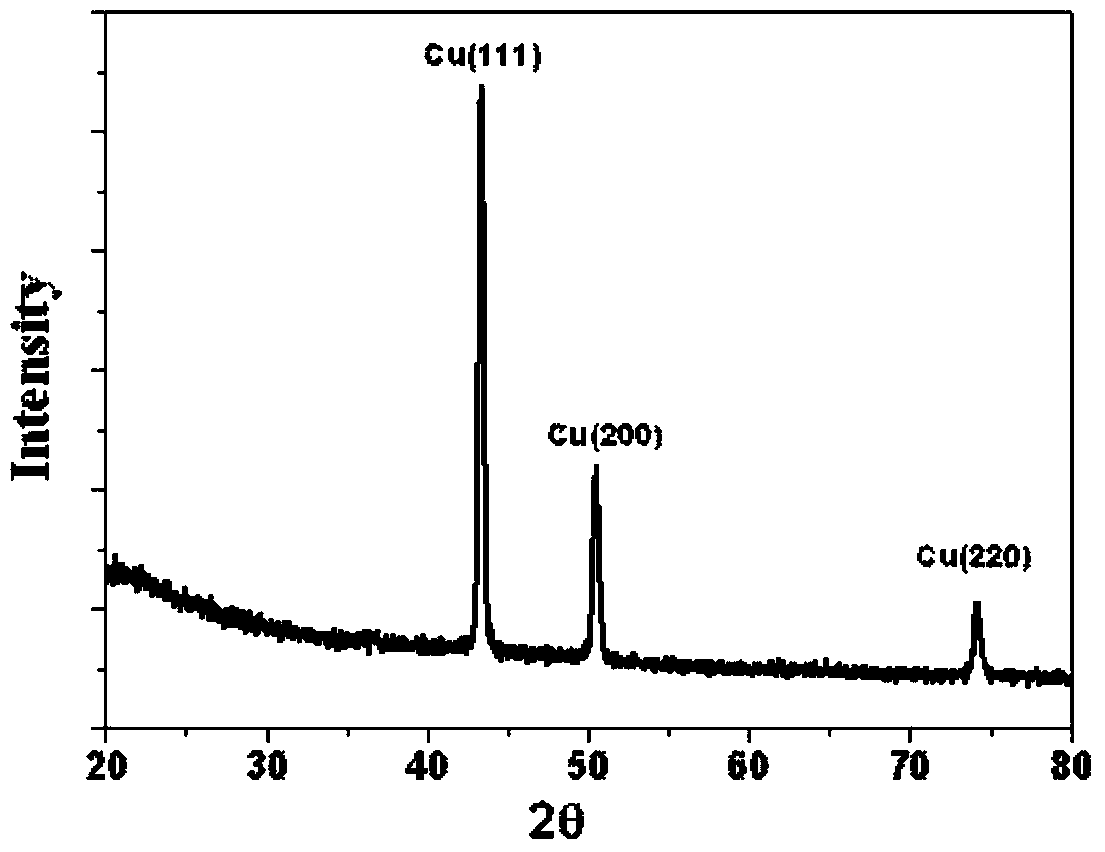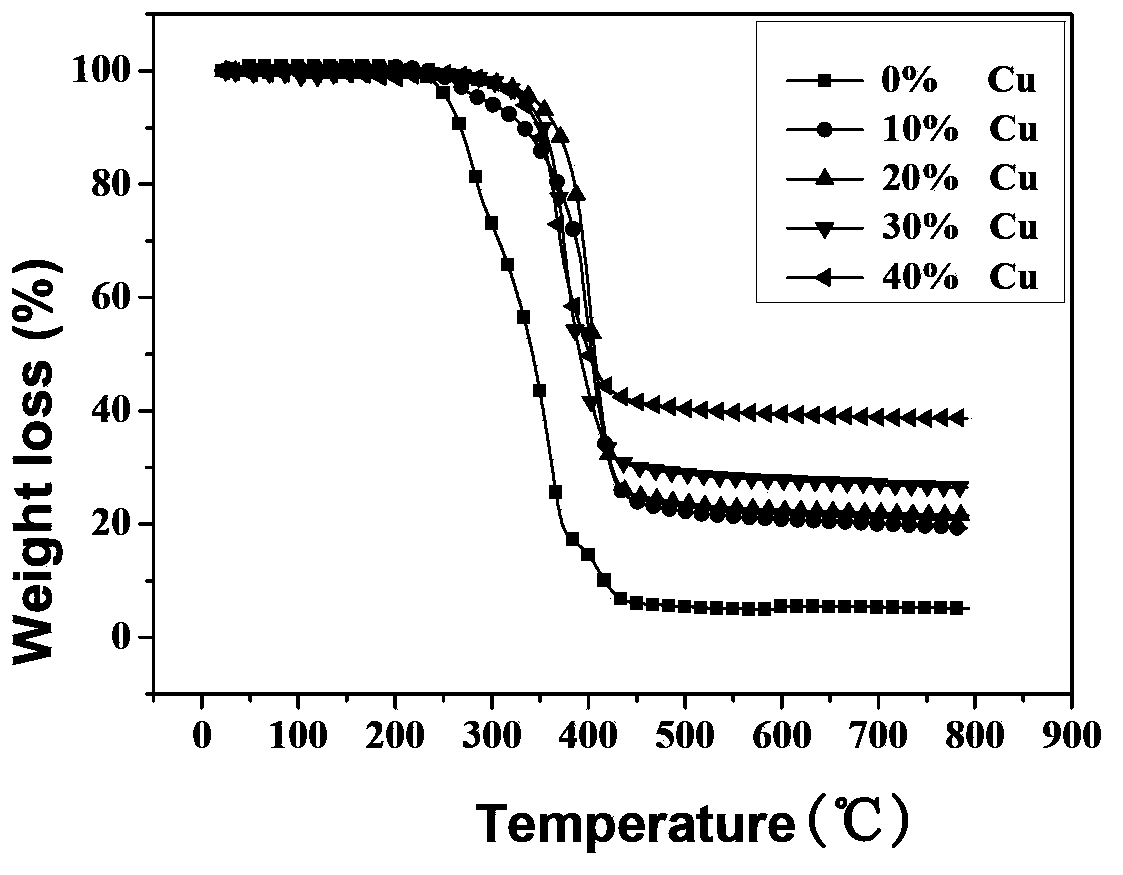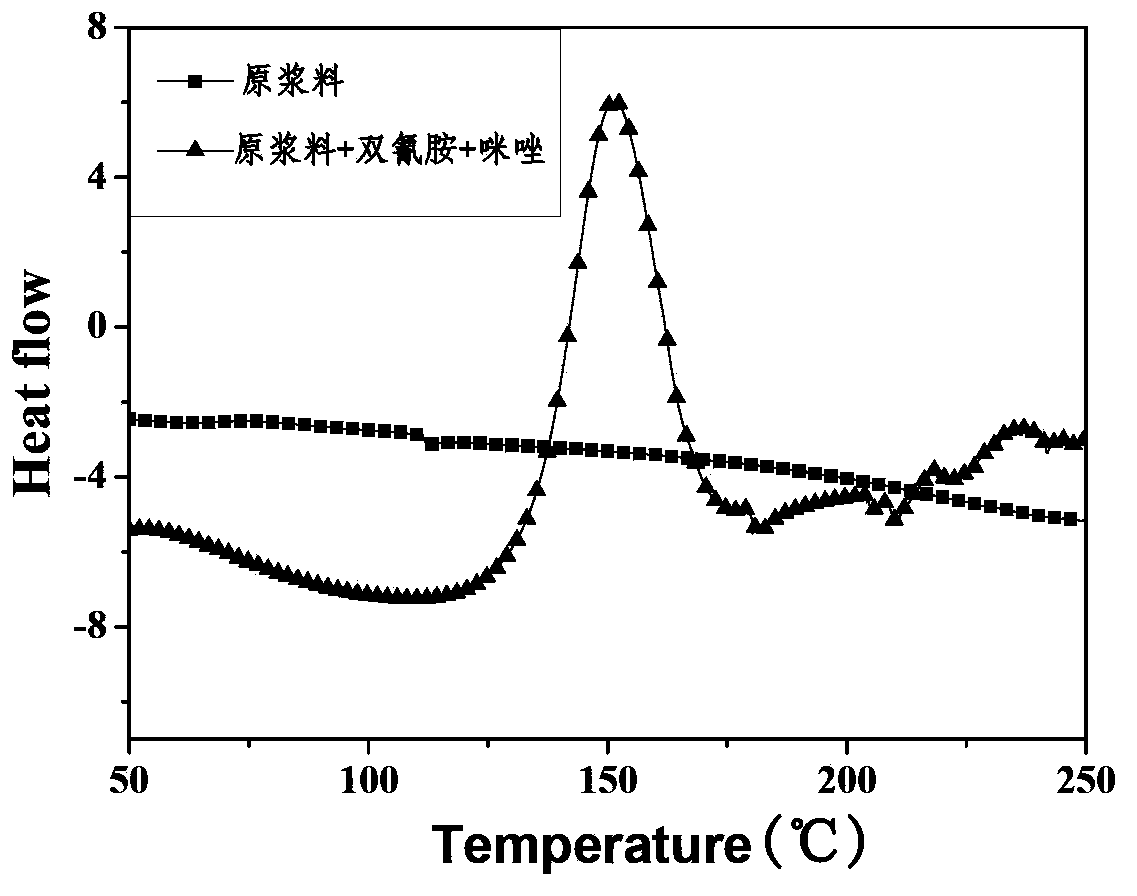Nano-copper-containing epoxide resin composite material and preparation method thereof
A technology of epoxy resin and composite materials, applied in the field of epoxy resin composite materials and its preparation, to achieve the effect of dielectric loss control and high dielectric constant
- Summary
- Abstract
- Description
- Claims
- Application Information
AI Technical Summary
Problems solved by technology
Method used
Image
Examples
Embodiment 1
[0037] Example 1: Add 40g of bisphenol A epoxy resin (E51), 10g of copper hydroxide, 1g of polyvinyl alcohol, and 20mL of ethylene glycol to a 250mL flask in sequence, then raise the temperature to 200°C, and react for 2 hours to obtain brown-red Nano copper / epoxy composite paste. Weigh 5.0g of slurry, add methyl ethyl ketone to disperse, then add 0.4g of dicyandiamide and 0.13g of dimethyltetraethylimidazole, ultrasonically stir evenly, rod-type film, and cure it at 150°C for 2h, 180 After curing at ℃ for 2h, the nano-copper / epoxy composite film was obtained. By changing the quality of the precursor copper hydroxide, composite materials with different mass fractions of Cu can be obtained.
[0038] Specifically, such as figure 1 As shown, the mass fraction of nano-copper in the epoxy matrix can be controlled between 5% and 80%. In addition, according to the difference between the mass fraction of nano-copper during feeding and the thermal decomposition of the slurry, it als...
Embodiment 2
[0040] Example 2: Add 40g of bisphenol A epoxy resin (E44), 10g of copper oxide, 1g of polyvinylpyrrolidone, and 20mL of ethylene glycol to a 250mL flask in sequence, then raise the temperature to 200°C, and react for 2 hours to obtain brown-red nano Copper / epoxy composite paste. Weigh 1.0 g of the slurry, add acetone to disperse, then add 0.8 g of an acid anhydride curing agent, stir it evenly with ultrasonic waves, and coat it, and cure it at 150°C for 2 hours to obtain a nano-copper / epoxy composite film. By changing the quality of the precursor copper oxide, composite materials with different mass fractions of Cu can be obtained.
Embodiment 3
[0041] Example 3: Into a 250mL flask, add 20g of bisphenol A epoxy resin (E51), 10g of Cu(acac) in sequence 2 , 1g of tetraethyl orthosilicate, 10mL of glycerin, then heated up to 260°C, and reacted for 4h to obtain a brown-red nano-copper / epoxy composite slurry. Weigh 15.0g slurry, 51.2gBaTiO 3 , add absolute ethanol to disperse, then add 0.4g tetraethylenepentamine, stir it evenly with ultrasonic, and make a rod coating film, and then cure it at 150°C for 4h to obtain nano-Cu / BaTiO 3 / Epoxy resin composite film. Changing the precursor Cu(acac) 2 The mass of Cu / BaTiO with different mass fractions of Cu can be obtained 3 / Epoxy resin composite film material.
[0042] Specifically, such as image 3 As shown, the cured composite film only appears the characteristic diffraction peak of the face-centered cubic structure of pure copper, and does not appear Cu 2 The characteristic peaks of copper oxides such as O and CuO indicate that the nanoparticles in the prepared slurry...
PUM
 Login to View More
Login to View More Abstract
Description
Claims
Application Information
 Login to View More
Login to View More - R&D
- Intellectual Property
- Life Sciences
- Materials
- Tech Scout
- Unparalleled Data Quality
- Higher Quality Content
- 60% Fewer Hallucinations
Browse by: Latest US Patents, China's latest patents, Technical Efficacy Thesaurus, Application Domain, Technology Topic, Popular Technical Reports.
© 2025 PatSnap. All rights reserved.Legal|Privacy policy|Modern Slavery Act Transparency Statement|Sitemap|About US| Contact US: help@patsnap.com



